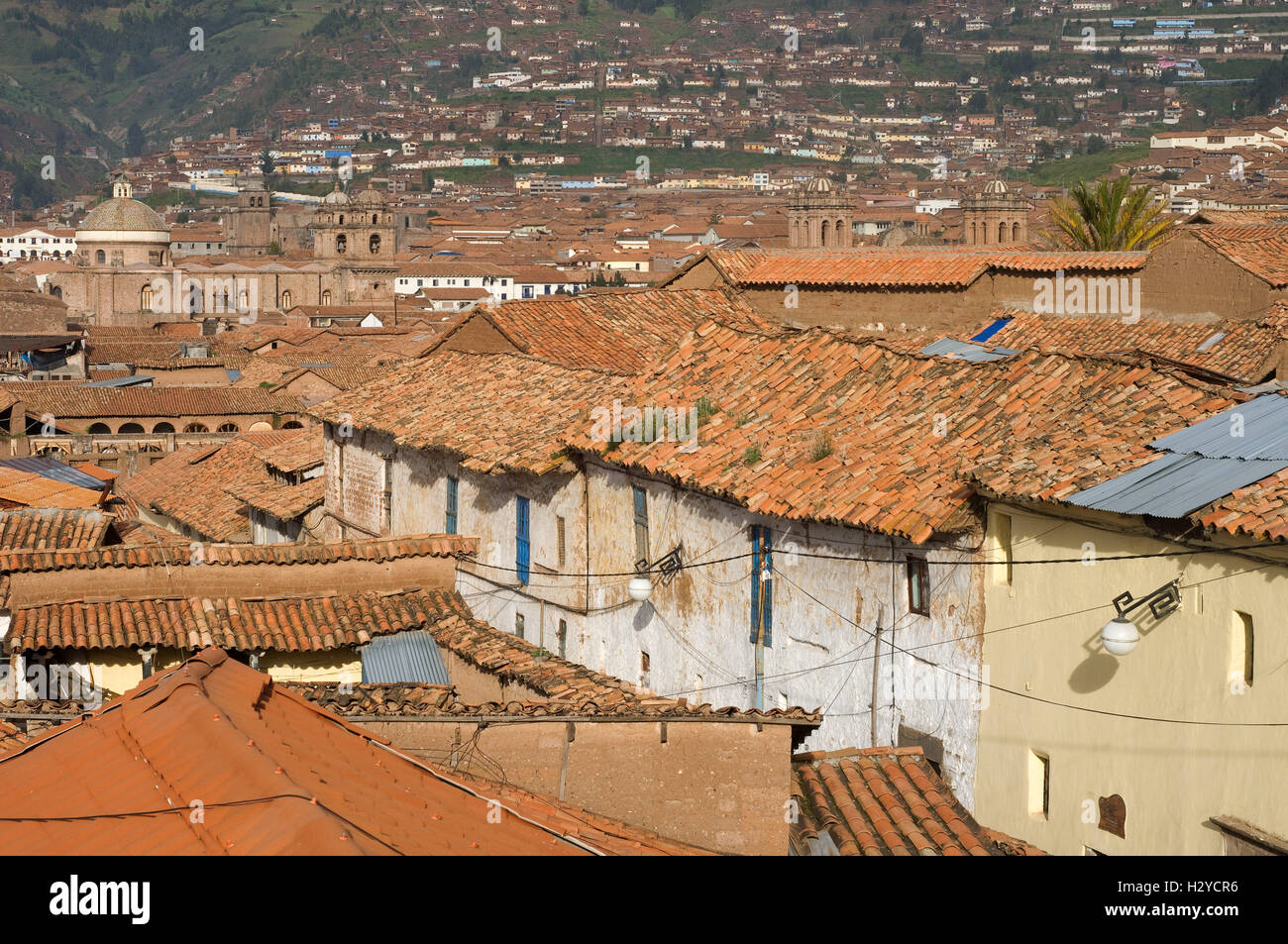Old town of Cuzco where tile roofs dominate. Cuzco. Situated in the Peruvian Andes, Cuzco developed, under the Inca ruler Pachac

Image details
Contributor:
Sergi Reboredo / Alamy Stock PhotoImage ID:
H2YCR6File size:
49.8 MB (3.8 MB Compressed download)Releases:
Model - no | Property - noDo I need a release?Dimensions:
5120 x 3401 px | 43.3 x 28.8 cm | 17.1 x 11.3 inches | 300dpiDate taken:
3 January 2019More information:
Old town of Cuzco where tile roofs dominate. Cuzco. Situated in the Peruvian Andes, Cuzco developed, under the Inca ruler Pachacutec, into a complex urban centre with distinct religious and administrative functions. It was surrounded by clearly delineated areas for agricultural, artisan and industrial production. When the Spaniards conquered it in the 16th century, they preserved the basic structure but built Baroque churches and palaces over the ruins of the Inca city. The City of Cuzco, at 3, 400 m above sea level, is located in a fertile alluvial valley fed by several rivers in the heart of the Central Peruvian Andes of South America. Under the rule of Inca Pachacuteq (Tito Cusi Inca Yupanqui), in the 15th century, the city was redesigned and remodelled after a pre-Inca occupation process of over 3, 000 years, and became the capital of the Tawantinsuyu Inca Empire, which covered much of the South American Andes between the 15th and 16th centuries AD. The Imperial city of the Incas was developed as a complex urban centre with distinct religious and administrative functions which were perfectly defined, distributed and organized. The religious and government buildings were accompanied by the exclusive abodes for royal families, forming an unprecedented symbolic urban compound, which shows a stone construction technology with exceptional aesthetic and structural properties, such as the Temple of the Sun or Qoricancha, the Aqllahuasi, the Sunturcancha, the Kusicancha and a series of very finely finished buildings that shape the Inca compound as an indivisible unity of Inca urbanism. The noble city was clearly isolated from the clearly delineated areas for agricultural, artisan and industrial production as well as from the surrounding neighbourhoods. The pre-Hispanic patterns and buildings that shaped the Imperial city of the Incas are visible today.